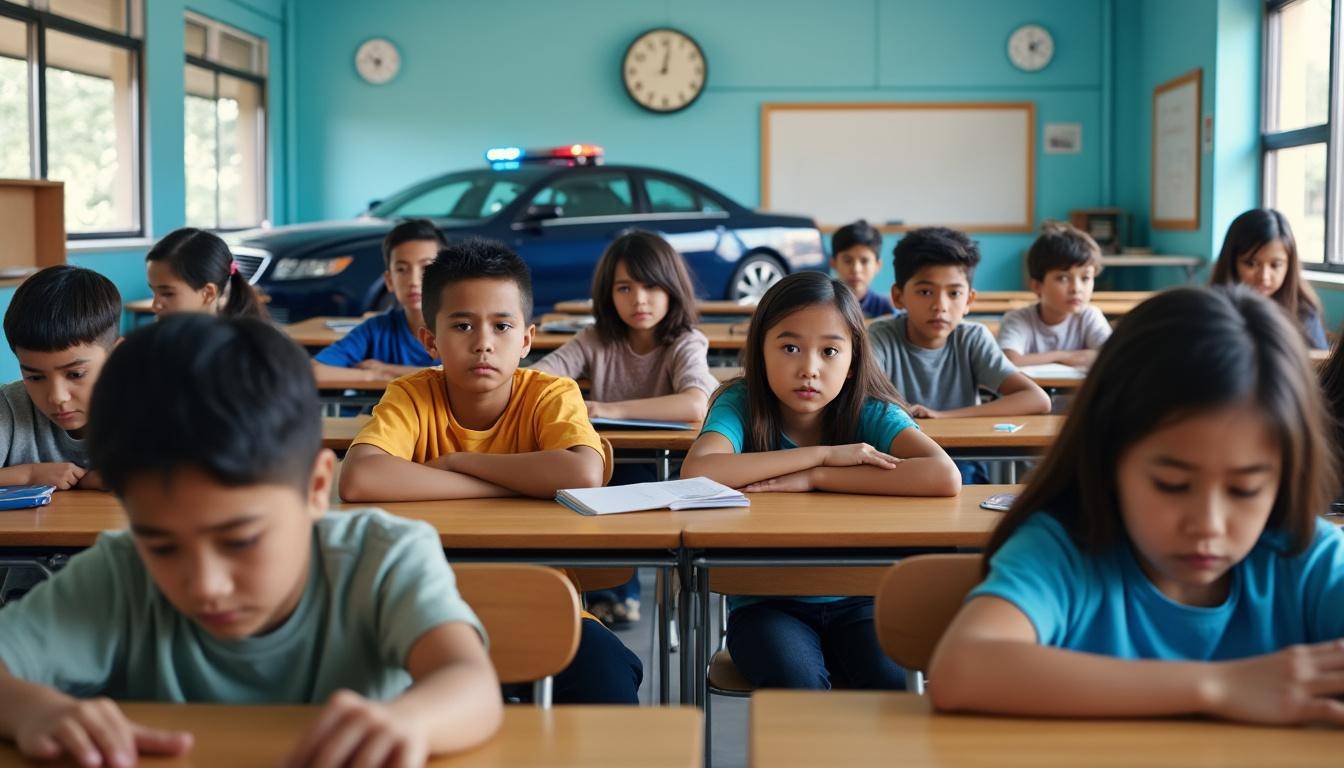In early 2025, the landscape of American education confronted a new dimension of crisis. Immigration raids, intensifying across various communities, have begun to deeply disrupt school attendance, amplifying challenges already present within the education system. The repercussions are immediate and far-reaching, touching students, families, educators, and advocates who tirelessly strive for equitable access to learning. This phenomenon reflects not only policy shifts but also instigates profound anxiety about safety and belonging in schools.
How Immigration Raids Are Increasing School Absences Nationwide
Recent immigration enforcement actions have directly contributed to a marked rise in student absences, especially in regions with high immigrant populations. Notably, school districts in the Central Valley and other parts of the country report attendance drops of up to 22 percent during the months following major raids. These absences are often driven by fear among families that children could be separated from their parents or face immigration-related consequences simply by attending school.
- Parents are keeping children home to avoid potential encounters with Immigration and Customs Enforcement (ICE) agents.
- Heightened anxiety among students affects concentration and participation, even when attendance persists.
- Schools struggle to maintain normal operations amidst rapidly changing attendance patterns and community fear.
Organizations such as the American Civil Liberties Union, National Immigration Law Center, and the Immigration Advocates Network emphasize the urgency of protecting student rights, invoking the legal precedent set by Plyler v. Doe which ensures education access regardless of immigration status.
The Role of Schools as Sensitive Spaces in a Changing Enforcement Climate
Traditionally, schools have been considered “sensitive locations,” places where immigration enforcement is limited to protect children’s right to education. However, recent policy adjustments have challenged this notion, resulting in raids occurring near schools and destabilizing the learning environment. This shift has alarmed educators and advocates alike, as it infringes on the safe space that schools have provided for generations.
- Educators from the American Federation of Teachers and National Education Association have voiced concerns over the chilling effect these raids have on school participation.
- The Migrant Education Program faces unprecedented demands as families seek additional support amidst uncertainty.
- Community organizations like RAICES and United We Dream mobilize to offer legal aid and reassurance to affected families.
The breakdown of these protections directly impacts student attendance and undermines decades of progress toward inclusive, nurturing educational settings.
Consequences Beyond Attendance: Educational and Emotional Impacts
Absenteeism is just one facet of the broader consequences immigration raids impose on students and schools. Emotional distress, disruptions in learning continuity, and fear-induced disengagement are pervasive. Children of undocumented families face an environment where their daily educational experience is overshadowed by the looming threat of deportation.
- Increased absenteeism leads to funding challenges for school districts that rely on daily attendance for resource allocation.
- Students report feelings of isolation and anxiety, which can exacerbate mental health issues.
- Teachers report increased difficulty addressing diverse student needs under heightened tensions.
Groups such as Families Belong Together and Kids in Need of Defense advocate for trauma-informed educational approaches to support students affected by these raids. Their work highlights the necessity of holistic, compassionate interventions to safeguard children’s wellbeing and academic success.
Strategies Schools and Communities Use to Mitigate Impact
Despite these challenges, numerous schools and communities are actively implementing strategies to encourage attendance and alleviate fear:
- Increasing communication with families to reaffirm schools as safe and welcoming spaces.
- Providing access to legal resources through partnerships with organizations like RAICES and United We Dream.
- Incorporating mental health support services to address emotional needs.
- Training educators through programs facilitated by the American Federation of Teachers and National Education Association on supporting students during crises.
While these efforts do not eliminate the root causes of absenteeism generated by immigration enforcement, they represent critical steps toward stabilizing school communities and preserving students’ opportunities for success.
The Broader Context: Policy Implications and Advocacy
The increased immigration raids at or near schools have reignited debates on federal policies and their implications for equitable education access. Advocates from the American Civil Liberties Union, National Immigration Law Center, and other coalitions continuously call for legislation to protect sensitive locations and restore trust in educational institutions.
- Demanding reinstatement of limits on immigration enforcement actions near schools and other community spaces.
- Highlighting the disproportionate effects on immigrant and refugee children.
- Promoting data collection and research to guide responsive education and immigration policies.
- Supporting funding for the Migrant Education Program to meet increasing student needs.
Collaboration between educators, legal advocates, and community groups remains vital to counteracting the attendance crisis exacerbated by immigration enforcement tactics.


